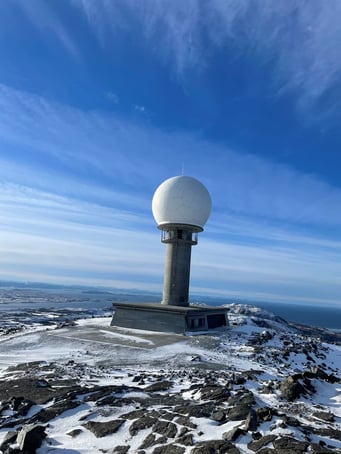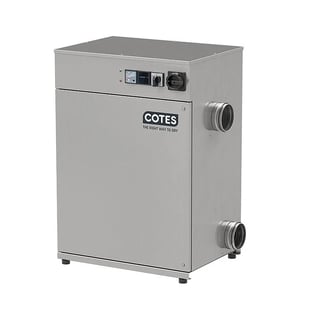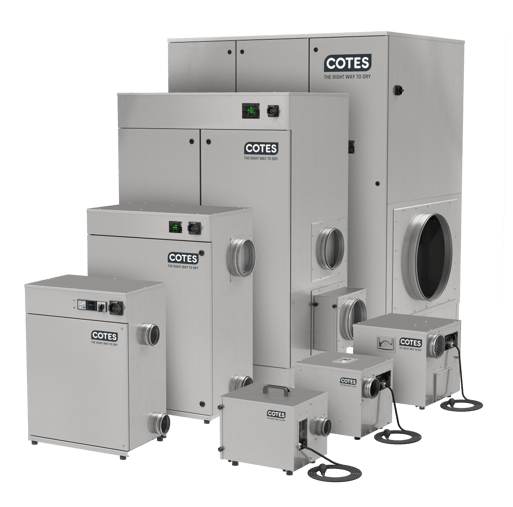In the realms of aviation and meteorology, ensuring the integrity of sensitive equipment is paramount. Radomes, named for the combination of 'radar' and 'dome', are specialised structures designed to protect radar systems from environmental hazards.
For satellite operators, minimising the impact of radomes on antenna performance is crucial, although some impact is unavoidable. Different environments require radomes with specific attributes; for instance, aircraft radomes require lightweight construction, while ship radomes must be sturdy and waterproof to prevent signal degradation from water absorption. Achieving a balance between physical durability, material quality, and manufacturing precision is crucial for radomes to withstand environmental factors such as water, snow, UV rays, vibrations, and temperature fluctuations, while maintaining optimal antenna performance over time.
PROTECTING RADOMES AGAINST HUMIDITY THREATS
In certain conditions, particularly when the external surface of the radome cools to or below the dew point temperature, condensation may form on its surface. This could potentially lead to moisture penetrating inside the dome, depending on its design and the materials used. To prevent condensation, the radome material should provide effective thermal insulation, maintaining a higher surface temperature and reducing the likelihood of reaching the dew point. However, achieving this balance between thermal insulation and signal transfer properties can be challenging, as the material must also resist moisture. Since radomes are typically closed structures, any trapped moisture can result in high relative humidity, posing serious detrimental effects on the radar operation, including:
- Corrosion of radar equipment
- Risk of electrical short circuits
- Reduced radar effectiveness due to moisture absorbing or deflection of electromagnetic waves
- Material degradation from prolonged exposure to humidity and related service costs
- Mold and fungal growth possibly leading to health hazard while servicing the dehumidifier
- Higher costs of maintenance related to inaccessibility at the placement of the radome high in the mountains
Excessive humidity in closed structures lacks an exit path. Therefore, installing a dry-air solution is crucial for avoiding humidity-related issues, especially if the radar equipment generates heat, which can interact with the cooler air inside the dome, creating a humid environment.
CASE STORY: Cotes C30 at Ørland Air Station in Norway
Due to their enclosed nature, radomes typically incorporate a dry-air solution during installation, a practice also adopted in Norway. At Ørland Air Station, F-Tech, Cotes trusted partner in Norway, installed a Cotes C30 dehumidifier inside a radome protecting approach radar. Positioned on a mountain for optimal signal transmission, the radome is exposed to harsh weather conditions common at high altitudes, including strong wind, low temperatures, and snow. These challenging conditions can jeopardise radar functionality and lead to humidity-related issues.

Image: Radome at Ørland air station, Nowray
The average annual temperature in the Ørland region is around 6 °C, fluctuating between -4 and +20 °C. Relative humidity ranges from 68% to 80%, averaging 75% throughout the year. Under these conditions, the dew point typically averages around 2°C, varying between -5 and 10°C annually. Condensation is most likely to occur when:
- Actual temperatures drop to or below the dew point
- During winter, when temperatures fall below the dew point, condensation is more likely, especially indoors or on poorly insulated walls or equipment
The Cotes C30 adsorption dehumidifier effectively maintains relative humidity around the radar, preventing condensation formation on the interior walls despite temperature differentials between the interior and exterior of the dome.
For precise dew point calculations tailored to your specific situation, download the Cotes Mollier Diagram.
THE BEST DEHUMIDIFIER FOR THE JOB

|
The selected C30 dehumidifier for Ørland Air Station boasts easy maintenance, low energy consumption, quiet operation, and low maintenance costs. Since its installation in 2016, F-Tech has reported no issues, indicating reliability and smooth performance. |
Part of the Cotes Modular range, the C30 offers versatility with various sizes and capacities, along with optional add-on modules to cater to specific requirements. Cotes adsorption dehumidifiers offer a cost-effective and energy-efficient solution for maintaining stable humidity levels. Unlike conventional heating methods, which are costly to run and inefficient for managing humidity fluctuations influenced by external weather conditions, these dehumidifiers excel in controlling indoor humidity. Learn more about our range: Download the Cotes Modular Units Datasheet.
For retrofitting or temporary setups, Cotes offers a range of Mobile units. These compact, lightweight dehumidifiers are designed for mobility, featuring handles for easy lifting and transportation. They can be adjusted or relocated as needed, providing a versatile solution for humidity control in radomes. To learn more about our Mobile range, download the Cotes Mobile Units Datasheet.

Image: Cotes Modular and Mobile Dehumidifiers
Do you have issues with humidity?
If you would like to determine the right dry-air solution for your production or if you would like to explore what a custom dry-air strategy could do for your business, please reach out to one of our trusted partners near you.